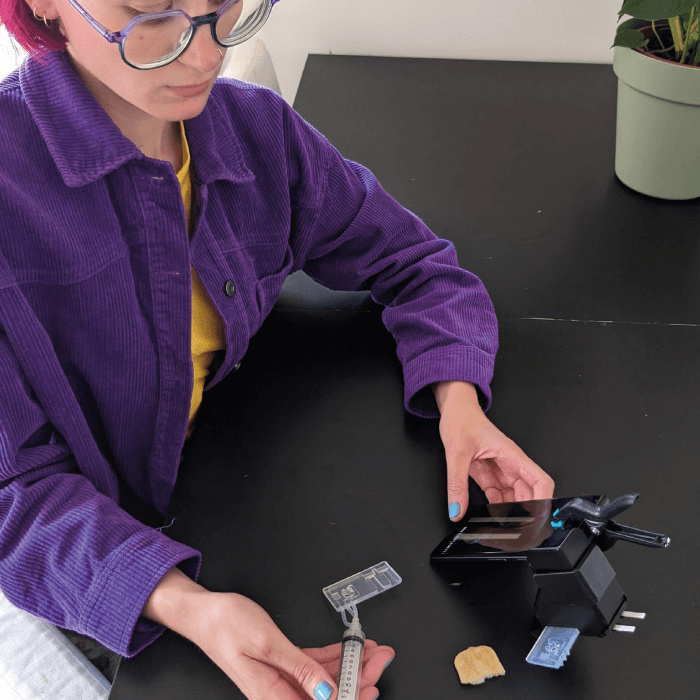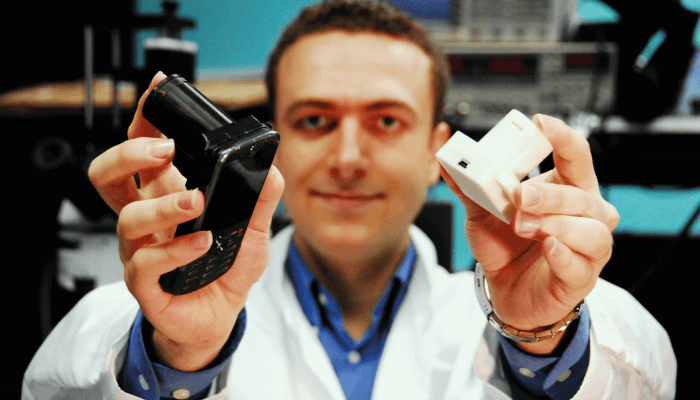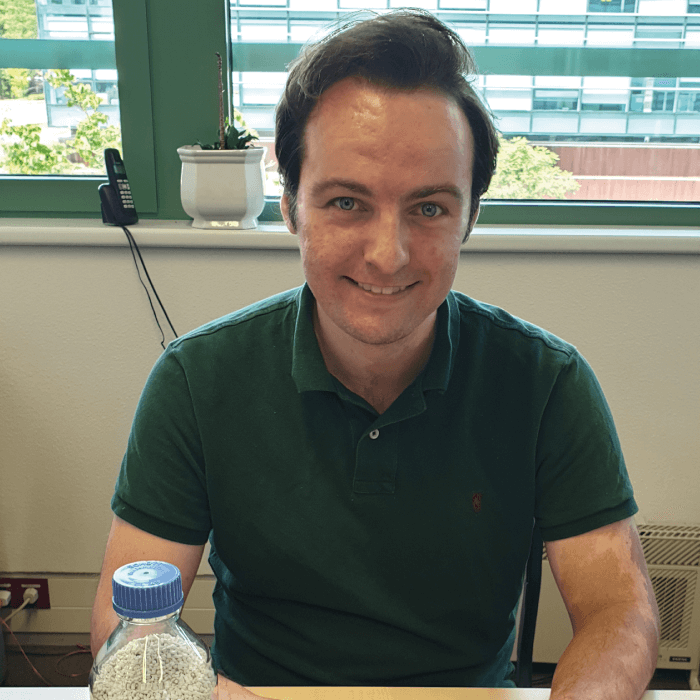Citizen science represents a next logical step in the democratization of analytical chemistry. A central aspect of this endeavor is bringing the lab to the sample – or, put another way, taking measurements outside of the traditional lab environment. At the forefront of this effort: designing simplified medical and analytical chemistry tools and making them accessible to citizens.
Of course, citizen science isn’t a new concept. A classic example is the pregnancy test, which was developed and made available to the public around 50 years ago. And today’s supermarket COVID-19 tests represent a similar development in response to the current pandemic. At our university, citizens have even supported a project studying the impact of climate change-driven disease migration on local insect populations by catching mosquito samples for analysis by experts in the lab.
All this stuff is great – but I can’t help thinking there is so much more we can achieve with citizen science. In the case of COVID-19, for example, these tests should not provide a simple yes or no answer – they should communicate valuable data to stakeholders, such as those in government or industry. And, with modern smartphones, we could use location tracking and timestamping to add even more value with real-time geotemporal maps of the acquired data. Imagine the power of such a tool in the fight against the pandemic?
Beyond COVID-19, we could also employ a citizen science approach to fight other plagues of humanity, such as environmental pollution and food fraud. The possibilities are tantalizing and we’re making progress, but where are we headed? How far have we gotten already? And what role does analytical chemistry play in this arena?
Right now, many of analytical chemistry’s contributions to citizen science exist in very simple forms. An example: pH testing of local surface waters – what could be simpler, right? But so many more tools are currently in development to form a bridge between analytical techniques and the public. Our FoodSmartphone project is a great example of a success story on this front (see Box 1: The Food Analyzer in Your Phone). This approach was simplified to the degree that even a teenager can perform a test without training.
In fact, we are very close to real-world implementation of citizen science devices in the area of food quality and safety. My colleague Yannick Weesepoel has done some cutting-edge work in the Phasmafood EU-project and also collaborates with Jeroen Jansen’s group (see the second sidebar: Enabling Citizen Science). For example, by employing handheld, near-infrared scanners to determine the moisture, protein, and fat content of food products through their packaging at supermarkets. These are simple, low-cost devices that can communicate with smartphones and detect issues, such as adulteration or mislabeling. I imagine these handheld devices will have a bright future in such applications – maybe in as little time as two years!
Though the devices are designed to be simple, the truth is that it takes a lot of work to bring analytical capabilities to the public. We are used to highly complex tools in academic and industrial lab environments, but simple tests with simple targets are needed when asking untrained individuals to play a role in research endeavors. A key part of this simplification is to identify single targets that can provide useful information about topics of interest. An example might be measuring a single metabolite that represents a metabolic pathway of interest in a disease versus measuring hundreds of related chemicals across the entire metabolome or microbiome.
Michel Nielen answers our questions about the FoodSmartphone project
What’s your mission with the FoodSmartphone project?
To bring the lab to the sample and rationalize the food quality and testing strategies in Europe. Current strategies rely on the classic (and limiting) dogma of sample acquisition in the field – on farms, at border inspection points, in supermarkets – and subsequent transport to labs. It can then take a day, a few days, a few weeks, or even a month to get results. Many of these samples are chosen at random, so we can waste lots of time analyzing the 99 percent of these that are destined to be safe and compliant. Clearly, this isn’t totally effective! We thought: what if key stakeholders like farmers and food inspectors, and eventually citizens, could conduct the pre-screening themselves? And that’s what we’re aiming to facilitate!
Sounds great! And who’s involved in the work?
The FoodSmartphone project was the result of a collaboration between seven leading institutes, including Wageningen Food Safety Research, Queen’s University in Belfast, the Spanish National Research Council in Barcelona, the University of Chemistry and Technology in Prague, Linköping University in Sweden, CSEM in Switzerland, and Aquamarijn Microfiltration in the Netherlands. Then there were additional partner organizations from industry, like Barilla (Italy) and Zeulab (Spain), and academia too.
The project was divided into five different R&D packages. One such package focused on biorecognition; one of our PhD students studied aptamers as alternatives to antibodies on this front, and others s studied DNA-directed immobilization and antifouling. This all plays a pivotal role in the development of high-density, high-capacity biosensors. Then there were of course groups focusing on detection with the smartphone camera and smartphones used in combination with electrochemical devices.
And is the method looking promising?
The prototype 3D-printed surface-plasmon resonance (a label-free bio-interaction technique) biosensor on a smartphone is definitely a game changer – and it comes with a total cost of less than 100 euros. What’s more, two different 3D-printed microfluidic sample preparation approaches have also emerged from our collaboration with the group at Linköping. Novel algorithms were defined for image recognition by the group in Belfast, too. As for the overall methodology, we previously developed a smartphone immuno-assay for a biomarkers in milk application with the Ozcan group (see the first sidebar: Protecting our Environment – and our Patients!) in 2014. Back then it took around 90 minutes to finally obtain a result. Today, our fastest allergen test takes around 30 seconds.
Has the work attracted much attention?
Absolutely! Of course, we have great relationships with the companies that our institutes are collaborating with, and we’ve attracted massive publicity that is still ongoing! The FoodSmartphone project has been picked up by radio and television, national newspapers and all kinds of Internet sources. We were recently approached by a major food industry to discuss future collaboration opportunities on the phone project. This is, naturally, very exciting. Watch this space for updates!

We’re seeing the literature booming with portable devices and sensors, but – more often than not – when you delve a little deeper you discover that there’s, for example, a required incubation step of 60 to 90 minutes, the need for a sample preparation step that uses a high-speed centrifuge, or the use of very expensive materials. These are clear obstacles to adoption by true citizens. Long time windows can dissuade many from participation, and who has a spare centrifuge lying around the house?
The answer moving forward is simplification – not only of the devices, but of the entire associated protocols, too. We need these approaches to be foolproof, featuring quality-by-design principles that deal with the issues of false positive and false negative results. One effective way to achieve data reliability is to provide some sort of indication of the quality of the results to the user. When results are strong enough to use, these should be automatically communicated to databases or the people responsible for processing them. The inevitable risk of sampling errors will be at least partly compensated by the high numbers of data that become available.
A quick case study of citizen science in the fight for a healthy environment and optimal patient care in Lyme Disease
By Aydogan Ozcan, Professor, the University of California, Los Angeles (UCLA), and an HHMI Professor with the Howard Hughes Medical Institute
Identifying and characterizing microscopic objects in water is critical for many applications. Yet, traditional water monitoring technology relies on in-field sample collection with subsequent laboratory analysis by either manually operated microscopy or optics-based flow-cytometry devices, which are expensive and require expert resources.
Our group has developed innovative holographic imaging flow cytometer (IFC) prototypes for the rapid and automated identification and characterization of micro-objects in water. Our IFC device uses a lens-less image sensor to capture interference patterns caused by light passing through and around micro-objects in samples. Our system computes intensity and phase images for micro-objects in its field of view, which are processed to extract object features like size, color, morphology, aspect ratio, and thickness.
Our group has successfully applied this device to label-free monitoring of phytoplankton compositions and the identification of potentially harmful algae in ocean water, as well as pathogen identification (such as Giardia and Cryptosporidium) in drinking water. We are currently working with a company to commercialize this technology in a practical and cost-effective way. Our goal is to democratize high-performance microscopic analysis and make it accessible for both professional and citizen users alike.
Citizen science accomplishes multiple goals at the same time. First, it allows participants to learn new skills and knowledge through direct experience. Second, the potential geographical spread of “citizen scientists” can allow us to tackle monitoring problems spread over large areas – and long periods of time, too. In these respects, environmental issues represent a rich set of problems for citizen scientists to address. Our work on phytoplankton compositions (which are sensitive to environmental changes and can lead to changes in water conditions that are dangerous for animals and people alike) is a great example of such an environmental application.
We have also explored the development of a multiplexed, paper-based sensor that harnesses mobile phones and deep learning to diagnose Lyme Disease via detection of a panel of target analytes. The current recommended approach – “two-tier serology” – has poor sensitivity for patients in the early stages of infection, in which antibiotic treatment is most effective. Our method takes only 15 minutes, is low cost, and can be conducted with a handheld mobile reader using a sandwich immunoassay!
Importantly, we also incorporated a synthetic peptide into our assay’s detection panel: modified-C6, composed of a C6-like epitope linked to a specific p41 epitope. This component of our assay elevates the diagnostic capability of our computational multiplexed vertical flow assay (xVFA), further increasing the reliability of our results. This xVFA was validated through a rigorous clinical study using samples from New York and Wisconsin. The result: 90.5 percent sensitivity and 87 percent specificity, which is – to our knowledge – the best diagnostic performance of a point-of-care test for Lyme Disease to date.

We aren’t quite where we would like to be yet. We have some great concepts, but there are problems and bottlenecks that we must face before citizen science hits the mainstream. The required infrastructure is on its way, though! We should all be incredibly excited about this.
As for uptake of these endeavors by the public at large, we shall have to consider the social and psychological challenges as well. Not everyone will be interested in learning about and performing scientific tests. A direct personal benefit could change this, as would be the case with a specific health check, food quality check, or environmental exposure check. And we should also prepare for communication issues. Test results will inevitably be challenged on social media, as is the case with scientific information in general. A strong communication strategy will help us to inform users and tackle misinformation at its sources.
There is hope, though. The younger generation loves to play and fiddle with gadgets – I’d wager there’s a reasonable chance that they would also like to try their hand with analytical devices. People might be even more tempted by the process if it is associated with causes to which individuals have strong connections. Environmentalists, for example, might lead the way by going the extra mile in obtaining pollution samples for some of the large-scale studies in which citizen science will be a powerful weapon. On this example of pollutants, I would guess that it will take around four to five years for citizen contributions to make an appearance.
For some other applications like the handheld near infrared scanners, however, it might take as little as two years. Along the way we’ll need to traverse the dreaded development “valley of death” (in which significant financial input is needed to reach the other side). This will mean validating the methods in labs with experts, building field trials, producing devices at scale, and so on. Getting these instruments to members of the public will definitely take some yardage, but we are sure to reap the rewards when we do.
I for one look forward to the citizen-driven future of science!
Jeroen Jansen discusses his forays in the world of citizen science
By Jeroen Jansen, Associate Professor, the Analytical Chemistry group at the Institute for Molecules and Materials, Radboud University, The Netherlands
We lead the Citizen Science Innovation Initiative (CSII) – a joint effort between analytical departments of several universities in the east of the Netherlands. Our ambition is to enable technology providers to reach a much-anticipated citizen science measurement solution alongside academic specialists. In that sense, the role of the citizen is – thus far – of limited importance. We want to change that.
As part of CSII, we worked with Nutricontrol to apply handheld near-infrared (NIR) sensors, which, for example, allow farmers to measure the quality of their animal feed in a reliable fashion. In another project, we used handheld NIR to analyze the health and sustainability of chicken fillets through packaging in supermarkets. We have also developed breath analysis equipment to measure citizen health in any location with the Enose company. This tool could allow us to conduct such analyses outside hospitals, where most people are presumably quite healthy – but this may not always be the case!
Enabling citizens to conduct their own measurements is of the utmost importance. In the 21st century, citizens are learning to gather and use their data in innovative ways. Whether it be maintaining health, improving their living environment, or examining exactly what their family is eating, citizens want to know more than ever before. The latest technological developments mean that citizens no longer have to rely on institutions for such measurements.
The main challenge: most citizens are not analytical chemists… To be truly powerful, we need measurement technologies that can be used with relative ease. More importantly, these technologies need to be developed in such a way that everyone can trust the result, regardless of their level of expertise. These data may then contribute to a much broader repository of “global data” that empowers scientists.
Technologically, citizen science has great potential. Any analytical chemist, however, knows that every measurement has its limitations. Citizens who haven’t received laboratory training may not understand these limitations. Turning all of these non-specialists into “Homo metans” (measuring humans!) is a big challenge. But this isn’t just a social science challenge. Having anybody contribute to a large data repository with centralized chemometrics will require a large effort in calibration transfer, data matching from different devices, and data preprocessing to remove non-chemical perturbations.





